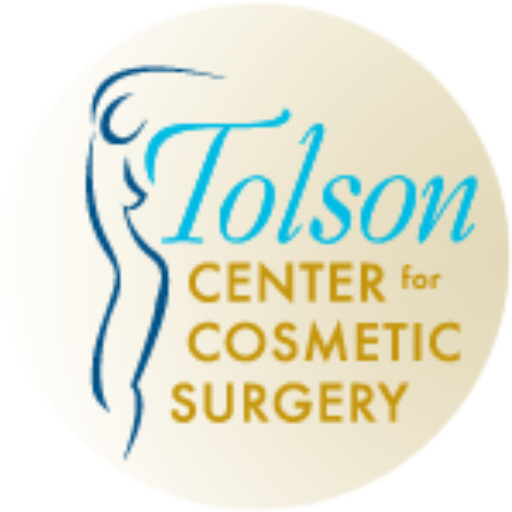Laser Resurfacing
How does laser resurfacing work?
Laser resurfacing sends short pulses of concentrated beams of light to the areas being treated, removing one layer of skin at a time. Because the light is concentrated and in pulses, Dr. Tolson effectively targets the spots that need treatment without damaging the rest of the skin and reduces the risk of hyperpigmentation. Laser has the added benefit of stimulating collagen growth, which causes the new skin to be firmer and smoother.
Is laser resurfacing safe for everyone?
Laser resurfacing is extremely safe, but it is not for everyone. Those who may want to avoid laser resurfacing are individuals who have
- Active acne.
- Very dark skin.
- Deep wrinkles.
- Excessively saggy skin.
Just because you suffer from one of the above problems does not automatically disqualify you from laser resurfacing. At your initial consultation, Dr. Tolson evaluates whether you are a good candidate for the procedure or not and discusses all your skin treatment options with you.
What does laser resurfacing look like?
Consultation
If you are considering laser resurfacing, you need to schedule an appointment for an initial consultation. Dr. Tolson is certified by the American Board of Plastic Surgeons and is a member of the American Society for Plastic Surgeons and the American Society for Aesthetic Plastic Surgery. Combining his skill and twenty-nine years of experience in the plastic surgery field, he takes the time with each patient to consider what is best for the individual and develops a customized treatment plan for you.
At your initial consultation, be prepared to
- Discuss your medical history, including any previous cosmetic treatments you have undergone.
- Discuss any current medical conditions from which you suffer.
- Discuss your cosmetic goals and your expectations from this treatment.
- Discuss your tobacco, alcohol, and drug use.
- List your current medications, vitamins, and supplements.
- List any allergies.
- Have pictures taken for your medical record and for use in computer imaging.
Preparation
In order to provide you the best possible results, Dr. Tolson may have you start on a series of customized skin treatments six weeks or more before your laser resurfacing appointment. Be sure to follow your treatment regimen exactly, ensuring the best possible outcome. Make arrangements for someone to drive you home after the procedure and stay with you the first night.
Six weeks before your laser resurfacing, stop using all tobacco products as these slow down the healing process. Avoid taking aspirin, anti-inflammatories, and any herbs that thin the blood at least four weeks before your scheduled treatment date. To help recovery go more smoothly, have some extra pillows and ice packs on hand.
Procedure
Laser resurfacing is an outpatient procedure that Dr. Tolson performs in his state-of-the-art, AAAASF-certified operating room in Cumming, Georgia. The resurfacing can take anywhere from thirty minutes to two hours, depending on how extensive the procedure is. In order to keep you comfortable throughout the resurfacing, Dr. Tolson administers local anesthesia and intravenous sedation. If extensive resurfacing is being done, he may choose to use general anesthesia.
To begin the laser resurfacing process, Dr. Tolson thoroughly cleans the area that is being treated. The laser is then used to essentially vaporize the damaged skin. Once he is finished, Dr. Tolson applies a dressing and moves you to recovery where one of his trained staff monitors you to ensure you are doing well. Before being discharged, either Dr. Tolson or a member of his staff goes over your after-care instructions.
Recovery
After laser resurfacing, your skin feels like you have a mild sunburn. In addition, you may have
- Some redness and swelling.
- Some itching and stinging.
- Raw, oozing blisters.
These symptoms should begin to disappear within one week, with the oozing blisters drying and getting crusty. Be careful not to pick at the crust, or you may cause permanent scarring.
For the basic care of your resurfaced skin,
- Clean the area two to five times a day with either a saline solution or a diluted vinegar solution.
- Faithfully use any skincare products Dr. Tolson may have prescribed.
- Apply sunscreen for sensitive skin every day. Dr. Tolson may prescribe a special sunscreen; use it.
- Use moisturizer liberally.
- Elevate the treated area using extra pillows to help minimize swelling.
- Apply ice for swelling and discomfort.
Results
Once the crusty skin dries and flakes off, you will see new, pink skin. The pink begins to fade after two to three months and may take up to a year to fully return to normal. If you are a blonde or redhead, you may notice more redness than brunettes. The healing process takes up to one year, so be sure to wear your sun screen faithfully and liberally. Nothing can stop the aging process, which will continue. Your new skin will be smoother and firmer, and you can repeat the process as often as necessary to maintain the look you want.
Request a Free Consultation With Dr. Tolson
Plastic Surgery Services

Meet Dr. Tolson
Board Certified Plastic Surgeon
Dr. Michael Tolson is board certified by the American Board of Plastic Surgery and a member of the American Society of Plastic Surgeons. Put Dr. Tolson’s years of cosmetic plastic surgery experience to work for you.
Request a Free Consultation
To receive a consultation, request your appointment online by filling out the form below. A member of our team will be in touch with you within 24 hours. We look forward to hearing from you.
CALL TODAY (770) 888-2999
